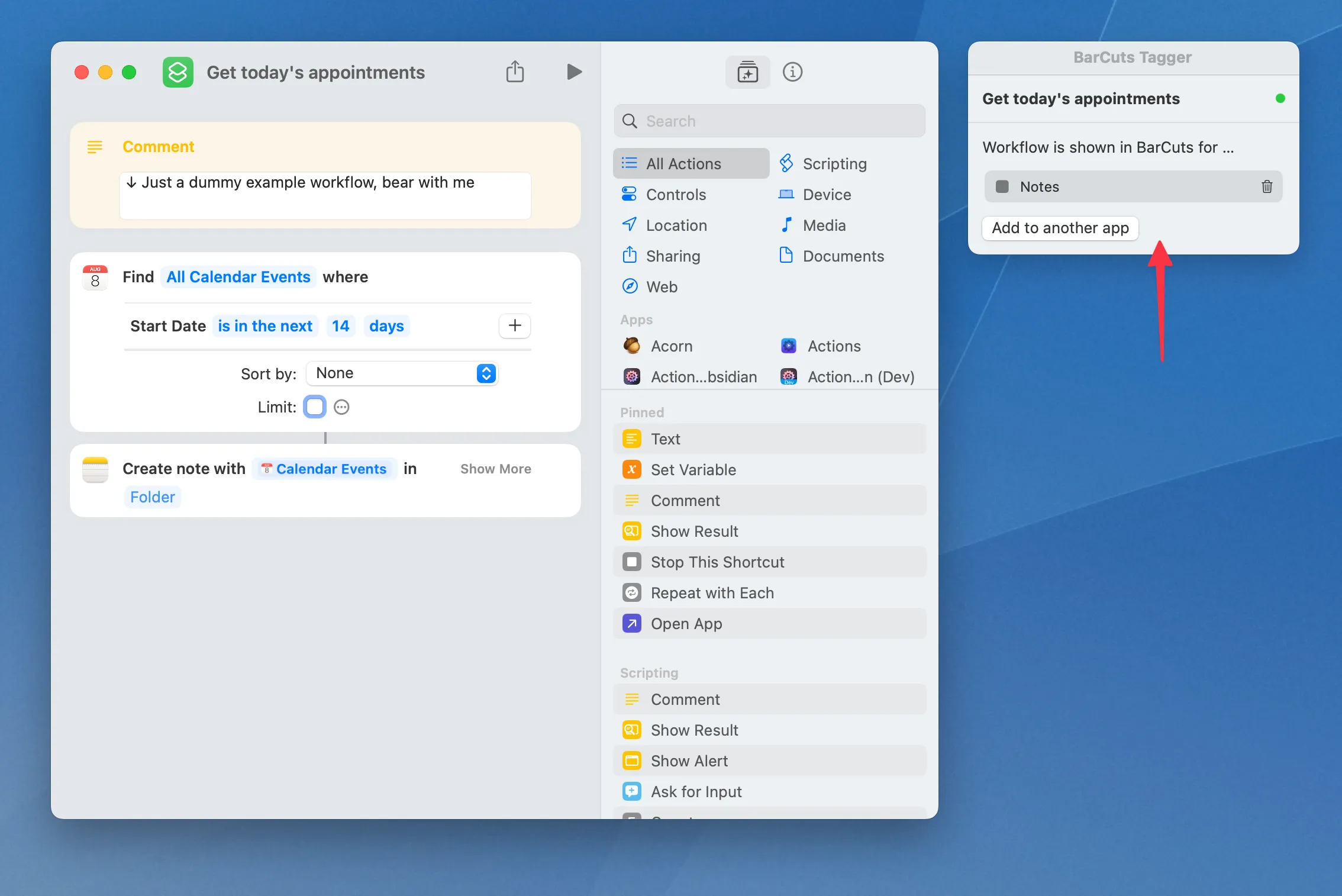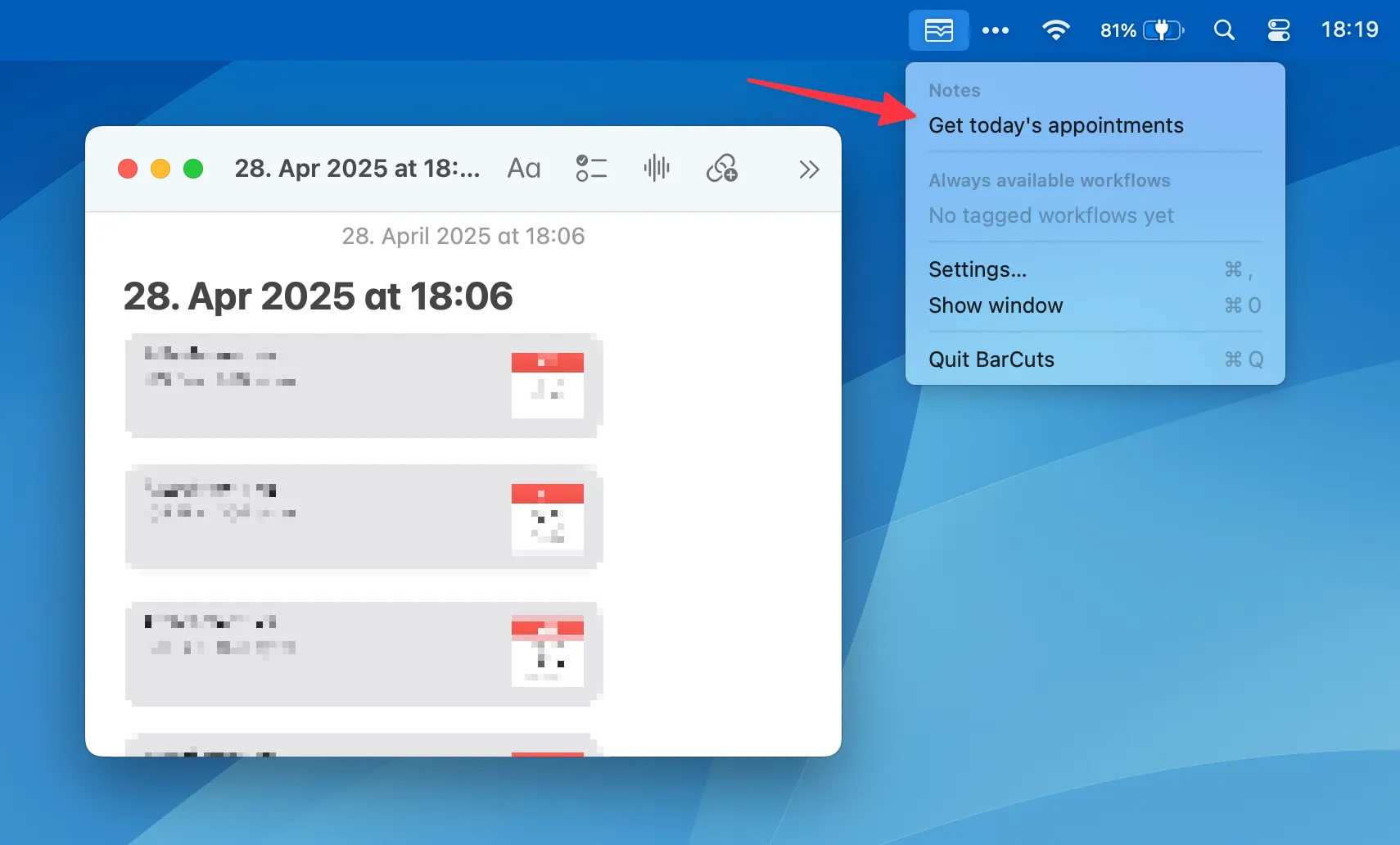As an example, let's assume you have a Shortcuts workflow named "Get today's appointments" which fetches your appointments from the calendar, and which you only ever need when working in Notes. Here it is in the Shortcuts editor:

You want this workflow to be available in the BarCuts menu whenever the Notes app is in front. So you'll find the floating panel titled "BarCuts Tagger" next to the window, and "tag" Notes as a related app to this Shortcuts workflow, as shown above.
Now, BarCuts' menu will list the workflow when Notes is the frontmost app:

And that's all there is to it!
The menu can be opened with the mouse, but you can also configure a global hotkey that will open it, in the app's Settings tab. Alternatively, you could also hook up BarCuts to Alfred, or connect it to your Raycast.